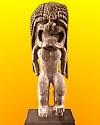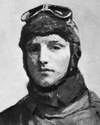
(EB)
Born 6 Nov 1892; died 18 Dec 1919 at age 27.
British aviator who as pilot, with his fellow British aviator Arthur Brown as navigator, completed the first nonstop transatlantic flight on 15 Jun 1919. Alcock served with the Royal Naval Air Service and was considered one of their best pilots. In the WW I, he flew numerous missions over Turkish enemy lines, winning a DSC for a solo attack on three Turkish planes (1917). Alcock and Brown took off on 14 Jun 1919 in a twin-engine Vickers Vimy, a converted bomber from Lester's Field near St. John's, Newfoundland. They landed the plane in a bog near Clifden, Ireland, the next day, having flown 1,950 miles in 16h 27m averaging 118 mph. They received a prize of £10,000 from the Daily Mail newspaper and were knighted. He died in an air crash six months after his transatlantic flight.
British aviator who as pilot, with his fellow British aviator Arthur Brown as navigator, completed the first nonstop transatlantic flight on 15 Jun 1919. Alcock served with the Royal Naval Air Service and was considered one of their best pilots. In the WW I, he flew numerous missions over Turkish enemy lines, winning a DSC for a solo attack on three Turkish planes (1917). Alcock and Brown took off on 14 Jun 1919 in a twin-engine Vickers Vimy, a converted bomber from Lester's Field near St. John's, Newfoundland. They landed the plane in a bog near Clifden, Ireland, the next day, having flown 1,950 miles in 16h 27m averaging 118 mph. They received a prize of £10,000 from the Daily Mail newspaper and were knighted. He died in an air crash six months after his transatlantic flight.
Born 6 Nov 1875; died 19 Dec 1934 at age 59.
Roland Burrage Dixon was an American cultural anthropologist who built Harvard's reputation for training anthropologists. After graduating from Harvard (1897) while an assistant at its Peabody Museum, he made archaeological excavations of the burial mounds in Madisonville, Ohio. He first visited the Indians of California in 1899, and with subsequent studies there through 1907 became a recognized authority on their ethnography, folklore, and linguistics. He travelled widely in his field work, making studies in Siberia, Mongolia, the Himalayas, and Oceania. He published work on the geographical distributions of cultural traits of diverse populations around the world in The Racial History of Man (1923).«[Image: Kuila-moku, one of the Hawaiian patron deities of medicine. Frontispiece in his Oceanic Mythology (1916).]
Roland Burrage Dixon was an American cultural anthropologist who built Harvard's reputation for training anthropologists. After graduating from Harvard (1897) while an assistant at its Peabody Museum, he made archaeological excavations of the burial mounds in Madisonville, Ohio. He first visited the Indians of California in 1899, and with subsequent studies there through 1907 became a recognized authority on their ethnography, folklore, and linguistics. He travelled widely in his field work, making studies in Siberia, Mongolia, the Himalayas, and Oceania. He published work on the geographical distributions of cultural traits of diverse populations around the world in The Racial History of Man (1923).«[Image: Kuila-moku, one of the Hawaiian patron deities of medicine. Frontispiece in his Oceanic Mythology (1916).]
The Buildings of Cultures, by Roland B. Dixon. - book suggestion.
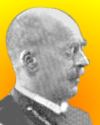
Born 6 Nov 1865; died 2 Jun 1926 at age 60.
British physician who studied tropical diseases in India (1890-97) as an army officer. In 1900, he determined a protozoon to be the disease agent for kala-azar, a disease now sometimes known as leishmaniasis. Later, he developed a vaccine against typhoid fever used during WW I that was believed to have reduced the incidence of the disease. Kala Azar or Black Fever probably existed for centuries in Bengal and China, but the first recognized outbreak was in Jessore, India (1824). It caused the deaths of 750,000 people in 3 years. His first original contribution to science was the development of an easy method to stain blood for malaria parasites, to examine cells from the spleen of a soldier who had died of kala-azar. It is still used today.
British physician who studied tropical diseases in India (1890-97) as an army officer. In 1900, he determined a protozoon to be the disease agent for kala-azar, a disease now sometimes known as leishmaniasis. Later, he developed a vaccine against typhoid fever used during WW I that was believed to have reduced the incidence of the disease. Kala Azar or Black Fever probably existed for centuries in Bengal and China, but the first recognized outbreak was in Jessore, India (1824). It caused the deaths of 750,000 people in 3 years. His first original contribution to science was the development of an easy method to stain blood for malaria parasites, to examine cells from the spleen of a soldier who had died of kala-azar. It is still used today.
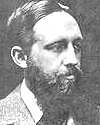
Born 6 Nov 1848; died 14 Aug 1887 at age 38. quotes
John Richard Jefferies was an English naturalist, novelist and essayist who began his literary career as a local reporter in Wiltshire, and from then on he wrote many works of natural history and country life, and essays in journals and magazines. Jefferies relied greatly on “field notebooks”, where he entered his meticulous observations on the life of the countryside. Wild Life in a Southern Country, in which the author, sitting on a Wiltshire down, observes in ever widening circles the fields, woods, animals, and human inhabitants below him, was published with success in 1879. He wrote his autobiography, Story of My Heart (1883). His vision was unappreciated in his own Victorian age but has been increasingly recognized and admired since his death.
John Richard Jefferies was an English naturalist, novelist and essayist who began his literary career as a local reporter in Wiltshire, and from then on he wrote many works of natural history and country life, and essays in journals and magazines. Jefferies relied greatly on “field notebooks”, where he entered his meticulous observations on the life of the countryside. Wild Life in a Southern Country, in which the author, sitting on a Wiltshire down, observes in ever widening circles the fields, woods, animals, and human inhabitants below him, was published with success in 1879. He wrote his autobiography, Story of My Heart (1883). His vision was unappreciated in his own Victorian age but has been increasingly recognized and admired since his death.
Nature Near London, by Richard Jefferies. - book suggestion.
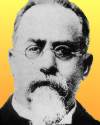
Born 6 Nov 1835; died 19 Oct 1909 at age 73.
Italian physician, psychiatrist and pioneer criminologist, who employed Darwinian ideas of evolution to account for criminal behaviour. Measuring heads of criminals against skulls of apes and prehistoric humans, he concluded that criminals were in fact hereditary victims of atavism - a reversion to evolutionarily primitive traits including those related to survival. In prehistoric times, a strong desire to kill, for example, would have made them good hunters and desirable mates, but criminals in urban environments. Lombroso believed this theory of atavistic criminality should influence punishment of crime. In many circles, his ideas met with concerted opposition. Later, Lombroso gradually included social factors as significant in disposing people to criminal behaviour.
Italian physician, psychiatrist and pioneer criminologist, who employed Darwinian ideas of evolution to account for criminal behaviour. Measuring heads of criminals against skulls of apes and prehistoric humans, he concluded that criminals were in fact hereditary victims of atavism - a reversion to evolutionarily primitive traits including those related to survival. In prehistoric times, a strong desire to kill, for example, would have made them good hunters and desirable mates, but criminals in urban environments. Lombroso believed this theory of atavistic criminality should influence punishment of crime. In many circles, his ideas met with concerted opposition. Later, Lombroso gradually included social factors as significant in disposing people to criminal behaviour.
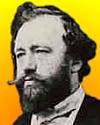
Born 6 Nov 1814; died 7 Feb 1894 at age 79.
Antoine-Joseph “Adolphe” Sax was a Belgian-French musical instrument designer, who took the name Adolphe, began creating new forms of musical instruments at age 15. He invented the saxophone (mid 1840s, patent application 21 Mar 1846), saxtromba (patented 1845), and sax horn (mid to late 1830s, patented 1845). Sax created the distinctive saxophone sound by combining the clarinet’s single reed and mouthpiece with a widened oboe’s conical bore. His first saxophones were of wood. Although he soon switched to brass, they remain classified as a woodwind instrument. Sax patented various instruments, adopted by French army bands. He had no factory production, made little profit, and was ruined by ten years in court protecting his patents. By the last years of his life, Sax was living in poverty.«
Antoine-Joseph “Adolphe” Sax was a Belgian-French musical instrument designer, who took the name Adolphe, began creating new forms of musical instruments at age 15. He invented the saxophone (mid 1840s, patent application 21 Mar 1846), saxtromba (patented 1845), and sax horn (mid to late 1830s, patented 1845). Sax created the distinctive saxophone sound by combining the clarinet’s single reed and mouthpiece with a widened oboe’s conical bore. His first saxophones were of wood. Although he soon switched to brass, they remain classified as a woodwind instrument. Sax patented various instruments, adopted by French army bands. He had no factory production, made little profit, and was ruined by ten years in court protecting his patents. By the last years of his life, Sax was living in poverty.«
Adolphe Sax, 1814-94: His Life and Legacy, by Wally Horwood. - book suggestion.
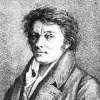
Born 6 Nov 1771; died 26 Feb 1834 at age 62.
Johann Nepomuk Franz Alois Senefelder was a German inventor who developed lithography. To publish his own work, he needed a less expensive and more efficient printing alternative to relief printed hand set type or etched plates. His invention was the biggest revolution in the printing industry since Johannes Gutenberg's movable type. Today photo lithography is used to print magazines and books, but the original process of drawing by hand on litho stones still exists in the fine art world. The traditional surface for lithography is Bavarian limestone, regrained by hand for each use. The principle is simple: oil based printing ink and water repel each other. The image is drawn with greasy crayon and chemically treated. The image areas of the stone accept ink and undrawn areas will reject it.
Johann Nepomuk Franz Alois Senefelder was a German inventor who developed lithography. To publish his own work, he needed a less expensive and more efficient printing alternative to relief printed hand set type or etched plates. His invention was the biggest revolution in the printing industry since Johannes Gutenberg's movable type. Today photo lithography is used to print magazines and books, but the original process of drawing by hand on litho stones still exists in the fine art world. The traditional surface for lithography is Bavarian limestone, regrained by hand for each use. The principle is simple: oil based printing ink and water repel each other. The image is drawn with greasy crayon and chemically treated. The image areas of the stone accept ink and undrawn areas will reject it.
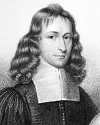
Born 6 Nov 1638; died Oct 1675.
Scottish mathematician, astronomer and inventor of the reflecting telescope, born in Aberdeen. He was the first to investigate converging number series, which have an infinite number of terms but a finite sum. He made important contributions to the development of the calculus, although some of his best work remained virtually unknown until long after his death. In 1660 he published his Optica Promota, in which he described the first practical reflecting ("Gregorian") telescope. Light reflected from a concave elliptical secondary mirror is brought to a focus just behind a hole in the primary mirror. It was superceded by the Newtonian and Cassegrain telescopes. Gregory also introduced estimation of stellar distances by photometric methods.
Scottish mathematician, astronomer and inventor of the reflecting telescope, born in Aberdeen. He was the first to investigate converging number series, which have an infinite number of terms but a finite sum. He made important contributions to the development of the calculus, although some of his best work remained virtually unknown until long after his death. In 1660 he published his Optica Promota, in which he described the first practical reflecting ("Gregorian") telescope. Light reflected from a concave elliptical secondary mirror is brought to a focus just behind a hole in the primary mirror. It was superceded by the Newtonian and Cassegrain telescopes. Gregory also introduced estimation of stellar distances by photometric methods.
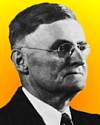
Died 6 Nov 1976 at age 88 (born 20 Sep 1888). quotes
American pathologist whose substantial research on the treatment of goitre with iodine led to the iodizing of table salt. During 1917-22 he ran a trial on a large group of schoolgirls to show that an iodine supplement dramatically reduced the incident of goitre (a major swelling of the thyroid gland in the neck). His results clearly showed the important of iodine in the diet. Dr. David. M. Cowie promoted the production of iodized table salt, first sold on 1 May 1924, and later throughout the U.S., greatly reducing the incidence of goitre. Marine worked on salt iodization for the World Health Organization, further spreading its benefits. (As early as 1821 French chemist Jean-Baptiste Boussingault had observed that iodine-rich salt could treat goiter.)« more
American pathologist whose substantial research on the treatment of goitre with iodine led to the iodizing of table salt. During 1917-22 he ran a trial on a large group of schoolgirls to show that an iodine supplement dramatically reduced the incident of goitre (a major swelling of the thyroid gland in the neck). His results clearly showed the important of iodine in the diet. Dr. David. M. Cowie promoted the production of iodized table salt, first sold on 1 May 1924, and later throughout the U.S., greatly reducing the incidence of goitre. Marine worked on salt iodization for the World Health Organization, further spreading its benefits. (As early as 1821 French chemist Jean-Baptiste Boussingault had observed that iodine-rich salt could treat goiter.)« more
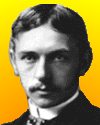
Died 6 Nov 1935 at age 78 (born 8 Aug 1857). quotes
American paleontologist and museum director who greatly influenced the art of museum display and the education of paleontologists in the United States and Great Britain. In 1891, the American Museum of Natural History hired Osborn as the first curator of the new Department of Vertebrate Paleontology because the trustees had realized that the Museum was falling behind other institutions in developing a collection of dinosaurs and other fossil vertebrates. Within a decade, Osborn assembled a talented staff of curators and collectors, and fossils were soon streaming into the Museum from all over the world. One of Osborn's favorite groups for study was the brontotheres, and he was the first to carry out comprehensive research on them. more
American paleontologist and museum director who greatly influenced the art of museum display and the education of paleontologists in the United States and Great Britain. In 1891, the American Museum of Natural History hired Osborn as the first curator of the new Department of Vertebrate Paleontology because the trustees had realized that the Museum was falling behind other institutions in developing a collection of dinosaurs and other fossil vertebrates. Within a decade, Osborn assembled a talented staff of curators and collectors, and fossils were soon streaming into the Museum from all over the world. One of Osborn's favorite groups for study was the brontotheres, and he was the first to carry out comprehensive research on them. more
The Origin and Evolution of Life: On the Theory of Action, Reaction and Interaction of Energy, by Henry Fairfield Osborn. - book suggestion.
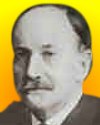
Died 6 Nov 1927 at age 65 (born 23 May 1862). quotes
English archaeologist who explored and excavated (1887–1907) in Cyprus, Crete, Egypt, Syria, and Melos. From 1908 until his death in 1927, he was Keeper of the Ashmolean Museum at Oxford. When Hogarth reopened the British Museum's excavation at Carchemish in northern Syria, he arranged for T. E. Lawrence to join the expedition. Later, Lawrence supported the Ashmolean as a buyer of antiquities in Syria. During WW I, Hogarth prepared reference works on the Middle East for the Geographical Section of Naval Intelligence, and also spent some time organizing the Arab Bureau in Cairo. After the war Hogarth and Lawrence were both involved in official deliberations about the political settlement of the Middle East.«
English archaeologist who explored and excavated (1887–1907) in Cyprus, Crete, Egypt, Syria, and Melos. From 1908 until his death in 1927, he was Keeper of the Ashmolean Museum at Oxford. When Hogarth reopened the British Museum's excavation at Carchemish in northern Syria, he arranged for T. E. Lawrence to join the expedition. Later, Lawrence supported the Ashmolean as a buyer of antiquities in Syria. During WW I, Hogarth prepared reference works on the Middle East for the Geographical Section of Naval Intelligence, and also spent some time organizing the Arab Bureau in Cairo. After the war Hogarth and Lawrence were both involved in official deliberations about the political settlement of the Middle East.«
Philip and Alexander of Macedon: Two Essays in biography, by David George Hogarth. - book suggestion.
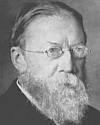
Died 6 Nov 1913 at age 79 (born 15 Feb 1834). quotes
Welsh electrical engineer who was a major figure in the development and introduction of wireless telegraphy and the telephone in Great Britain. Preece's interest in applied electricity and telegraphic engineering was developed as a graduate student under Michael Faraday. For 29 years, from 1870, he was an engineer with the Post Office telegraphic system and contributed many inventions and improvements, including a railroad signaling system that increased railway safety. An early pioneer in wireless telegraphy, he originated his own system in 1892. He encouraged Guglielmo Marconi by obtaining assistance from the Post Office for his work. Preece also introduced into Great Britain the first Bell telephones. Preece was knighted in 1899.
Welsh electrical engineer who was a major figure in the development and introduction of wireless telegraphy and the telephone in Great Britain. Preece's interest in applied electricity and telegraphic engineering was developed as a graduate student under Michael Faraday. For 29 years, from 1870, he was an engineer with the Post Office telegraphic system and contributed many inventions and improvements, including a railroad signaling system that increased railway safety. An early pioneer in wireless telegraphy, he originated his own system in 1892. He encouraged Guglielmo Marconi by obtaining assistance from the Post Office for his work. Preece also introduced into Great Britain the first Bell telephones. Preece was knighted in 1899.
Telegraphy, by William Henry Preece. - book suggestion.
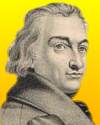
Died 6 Nov 1822 at age 73 (born 9 Dec 1748).
French chemist who was the first to note that the completeness of chemical reactions depends in part upon the masses of the reacting substances (1803); he thus came close to formulating the law of mass action. Though he incorrectly concluded that elements unite in all proportions, his resulting controversy with the chemist Joseph-Louis Proust led to the establishment of the law of definite proportions. He continued Carl Scheele's research on chlorine, showing in 1785 how it could be used for bleaching. He continued Joseph Priestley's investigation of ammonia, and was the first to show it was a compound of hydrogen and nitrogen. He discovered potassium chlorate.
French chemist who was the first to note that the completeness of chemical reactions depends in part upon the masses of the reacting substances (1803); he thus came close to formulating the law of mass action. Though he incorrectly concluded that elements unite in all proportions, his resulting controversy with the chemist Joseph-Louis Proust led to the establishment of the law of definite proportions. He continued Carl Scheele's research on chlorine, showing in 1785 how it could be used for bleaching. He continued Joseph Priestley's investigation of ammonia, and was the first to show it was a compound of hydrogen and nitrogen. He discovered potassium chlorate.
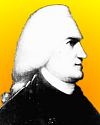
Died 6 Nov 1790 at age 64 (born 7 Aug 1726).
American founder and first president of the American Academy of Arts and Sciences (1780). He was a scientist prominent in physics and astronomy, and wrote several papers including one on electricity with Benjamin Franklin, a close friend. In one of his letters to Franklin, Bowdoin suggested the theory, since generally accepted, that the phosphorescence of the sea, under certain conditions, is due to the presence of minute animals. Bowdoin was also a political leader in Massachusetts during the American revolution (1775-83), and governor of Massachusetts (1785-87). His remarkable library of 1,200 volumes, ranged from science and math to philosophy, religion, poetry, and fiction. He left it in his will to the Academy.
American founder and first president of the American Academy of Arts and Sciences (1780). He was a scientist prominent in physics and astronomy, and wrote several papers including one on electricity with Benjamin Franklin, a close friend. In one of his letters to Franklin, Bowdoin suggested the theory, since generally accepted, that the phosphorescence of the sea, under certain conditions, is due to the presence of minute animals. Bowdoin was also a political leader in Massachusetts during the American revolution (1775-83), and governor of Massachusetts (1785-87). His remarkable library of 1,200 volumes, ranged from science and math to philosophy, religion, poetry, and fiction. He left it in his will to the Academy.
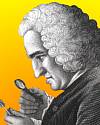
Died 6 Nov 1777 at age 78 (born 17 Aug 1699).
French botanist whose method of plant classification was based on anatomical characteristics of the plant embryo. Although he first studied medicine, in 1722 he became subdemonstrator of plants in the Jardin du Roi, Paris. In 1758, Louis XV made him superintendent of his royal garden at Trianon near Paris, which was to contain specimens of all plants cultivated in France. It was here that he devised his system to arrange and catalogued the plants of Trianon. He did not arrange the genera systematically in groups according to a single characteristic, but after consideration of all the characteristics, which, however, are not regarded as of equal value. His brothers, Antoine and Joseph, and nephew Antoine-Laurent, were also botanists.«
French botanist whose method of plant classification was based on anatomical characteristics of the plant embryo. Although he first studied medicine, in 1722 he became subdemonstrator of plants in the Jardin du Roi, Paris. In 1758, Louis XV made him superintendent of his royal garden at Trianon near Paris, which was to contain specimens of all plants cultivated in France. It was here that he devised his system to arrange and catalogued the plants of Trianon. He did not arrange the genera systematically in groups according to a single characteristic, but after consideration of all the characteristics, which, however, are not regarded as of equal value. His brothers, Antoine and Joseph, and nephew Antoine-Laurent, were also botanists.«
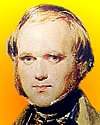
In 2012, Charles Darwin received 4,000 write-in votes from voters in Athens-Clarke County, Georgia, protesting the re-election of an anti-science fundamentalist, Paul Broun. The Republican, a medical doctor, ran unopposed in the general election as a U.S. Representative. He sat on the Science, Space and Technology Committee. Yet, on 27 Sep 2012, Broun had expressed his contempt for the true meaning of science research when he called evolution and the Big Bang Theory, “lies straight from the pit of hell,” in a speech to a sportsman's banquet at a Baptist church. Although the votes for Darwin could not count officially, a University of Georgia plant biology professor, Jim Leebens-Mack promoted the write-in campaign to protest the incongruity of an anti-science fundamentalist on such a committee.«

In 1981, the rediscovery of the black-footed ferret (previously thought extinct in 1979), was reported by the U.S. Fish and Wildlife Service. One had been captured in Wyoming and fitted with a radio transmitter. Historically it was a predator of prairie dogs on North America's arid, shortgrass prairies. Farming's destruction of the habitat and wide-scale poisoning to eradicate prairie dogs as pests, resulted in the disappearance of their specialized predator, the ferret. It now survives in a program of captive breeding and reintroduction sites where prairie dog towns are also protected. About 100 acres of a prairie dog colony are needed to support one ferret family (a female and her young). Predators such as owls, eagles, hawks, coyotes, badgers, foxes, and bobcats are the main cause of death for wild ferrets.«
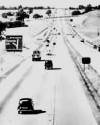
In 1959, the first two deaths occurred on England's first motorway, the M1. It had been opened only four days earlier on 2 Nov 1959. Two lorry drivers died when they crashed into the back of vehicles halted by a minor crash. In the multiple-vehicle crash which occurred in thick fog, five persons were injured. The new superhighway without a speed limit had traffic jams in both directions for several hours. It was the first part of a planned 400-mile motorway network that was the greatest road transport improvement project since the famous straight roads the Romans built. It was a quarter-century late by international standards, but its design benefitted from knowledge gained from expressways already built in the U.S. and Europe.*
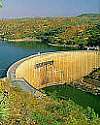
In 1956, the British colonial government in Rhodesia began the construction of the Kariba High Dam across the Zambesi river between North and South Rhodesia (now Zambia and Zimbabwe). Completed in Jun 1959, it was the largest dam of its time and provides electricity to the region. A year later, Britain's Queen Elizabeth officially started the Kariba generators and one of Africa's most ambitious projects came to life. The dam rises 128-m (420-ft) from the river bed. Behind it Lake Kariba stretches back for 290-km (180-mi), covers 6,000 sq km (3,750 sq mi) and is 42-km (26 mi) across at its widest. During construction "Operation Noah" ensured the rescue of over 5,000 animals comprising 35 different mammal species and thousands of reptiles.
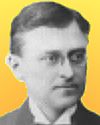
Packard
In 1899, James Packard and his brother, William Doud Packard, had finished building a car of their own design, and gave it a road test on the streets of Warren, Ohio. As a mechanical engineer, when he was dissatisfied the Winton car he had had bought, and gave his criticsms to the manufacturer, it is said that Alexander Winton gave him a curt reply suggesting that he build his own, if he thought he could do better. It took fourteen months for the Packard brothers, with two men hired from Winton, to produce what became known as the Packard Model A. It had high wire wheels, was steered by a tiller rather than a wheel, and was powered by a single-cylinder engine under the seat. Packard had invented the automatic spark advance as an improvement. He sold the car for $1250, and thus began in business.«
Packard Motor Car Company, by Evan P. Idle. - book suggestion.
In 1862, a direct telegraphic link between New York and San Francisco was established.
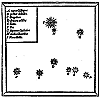
In 1572, a supernova was first noted by Wolfgang Schüler of Wittenberg (?-1575) in the W-shaped constellation of Cassiopeia but was seen by many observers throughout Europe and in the Far East. It appeared as a new star, adjacent to the fainter star seen just northwest of the middle of the “W.” Tycho Brahe first noticed this new star on 11 Nov 1572, and he began to meticulously record its appearance. Although he was not the first to see it, he gained fame from his book Stella Nova (Latin: “new star”). For two weeks it was brighter than any other star in the sky and visible in daytime. By month's end, it began to fade and change colour, from bright white to yellow and orange to faint reddish light. It was visible to the naked eye for about 16 months until Mar 1574.«[Brahe's drawing of Cassipeia, with the position of the stars. Nova Stella, the brightest is marked as “I”]
first noticed this new star on 11 Nov 1572, and he began to meticulously record its appearance. Although he was not the first to see it, he gained fame from his book Stella Nova (Latin: “new star”). For two weeks it was brighter than any other star in the sky and visible in daytime. By month's end, it began to fade and change colour, from bright white to yellow and orange to faint reddish light. It was visible to the naked eye for about 16 months until Mar 1574.«[Brahe's drawing of Cassipeia, with the position of the stars. Nova Stella, the brightest is marked as “I”]
Tycho & Kepler, by Kitty Ferguson. - book suggestion.
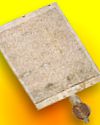
In 1217, the Charter of the Forest was issued by King Henry III, in the second year of his reign. It complemented his updated Magna Carta (the “Great Charter” of English liberties granted by King John in 1215). The Charter of the Forest specified further liberties, returning forests to their uses by the common man before the coronation of King Henry II (1154), and overturned his forest law, its restrictions and levies. The Royal Forest designation for the King’s purposes, by King Henry II, had encompassed not only woodland, but also fields, moorland, heathland or even farms and villages. The charter returned rights to the common man including access, pasture, grazing, cutting turf, collecting firewood, and ended harsh penalties.«
